The second Royal Air Force P-8A Poseidon Maritime Patrol Aircraft has flown for the first time.
The aircraft took to the skies to conduct the initial Boeing test flight before the essential mission equipment is installed, according to a tweet.
The second @RoyalAirForce P-8A Poseidon ZP802, City of Elgin, took to the skies earlier this week to conduct the initial @Boeing test flight before the essential mission equipment is installed. The aircraft will be delivered to @CXX_Squadron early next year. #ItsComing pic.twitter.com/21HIE2r5Rp
— P-8A Poseidon RAF (@P8A_PoseidonRAF) September 19, 2019
Earlier in the year, we reported that aircrew have commenced the flying phase of training to fly the Poseidon MRA Mk1. Pilots, Weapons System Officers and Weapons Systems Operators entered the simulator and flying phase of their six-month course.
The personnel, from CXX Squadron at RAF Lossiemouth, are being trained by a mix of US Navy and RAF P-8A ‘seedcorn’ one-way exchange instructors on a course which covers a substantial range of topics.
The Poseidon is based on the Boeing 737-800NG aircraft, the supply chain for which is already supported by UK industry, providing several hundred direct UK jobs. UK manufacturers also provide specialist sub-systems for the P-8A, for example Marshalls (auxiliary fuel tanks), Martin Baker (crew seats), GE (Weapon Pylons) and GKN Aerospace (windshields).
In January, Boeing was awarded an almost $2.5 billion contract to produce 19 P-8A Poseidon maritime patrol aircraft for the US Navy, Norway and the United Kingdom.
Ten of the aircraft were for the US Navy, four for the UK and five for Norway.
The UK intends to procure 9 of the aircraft in total and had already ordered five. The January purchase brought the total UK order of P-8A Poseidon Maritime Patrol Aircraft up to 9.





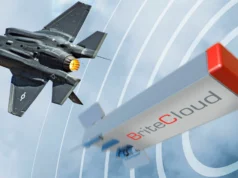
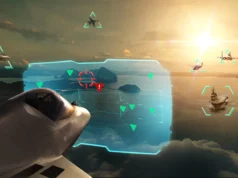
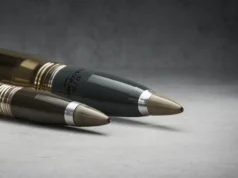
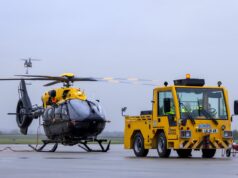

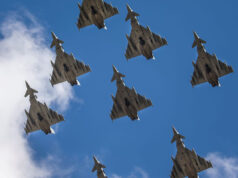


A fast way to amplify our strategic reach would be to buy 30 of these and dominate the GIUk gap, med and gulf.
Agree.
UK should be a sea, air, and intelligence power. Not a land power.
The Generals will never have that, what would they do with themselves.
I have no strong views on this either way but I am curious as to your reasoning?
Do these have a MAD detector?
Yep….they have already located Trump and much of his high command! When they make it across the Atlantic Boris and Cummings will be in range!
What about the labour guy!! I really meant for finding subs.
He’s not mad….just desicated. Add water to reconstitute! You mean magnetic anomaly detector…..last time I used one of those was looking for a lost leg from a jack up platform!
They have MAD.
If the MRA1 Poseidon is based on the USN P-8A, then it does not come equipped with MAD. However, if the MoD requested that a MAD be part of the equipment, it can be added like on the Indian Air Force P-8I.
A mere 9 years after the Nimrod aircraft were smashed up on the altar of political ‘ideology’…
Uncertifiablity you mean
Not sure what you mean… the aircraft ?
The Nimrod was overdue , and over budget, with the cuts made to the numbers (21 to 9 frames) required the planes were already costing more than the B2 bomber. But the death blow to the Nimrod was the mid air explosion over Afghan in 2006 killing 21 servicemen.
The problem we had with the Nimrod was it written into UK folk law and as such its faults were overlooked.
Sorry, but none of that is true. Just tory propaganda to attempt to justify one of the most stupid decisions on national security since WW2. You will find this informative, I’m sure:-
https://publications.parliament.uk/pa/cm201012/cmselect/cmdfence/761/761vw15.htm
Haddon Cave.
That put the nail in the coffin of legacy and MR4 Nimrod and led to a complete and overdue look at Risk Management associated with ALL MOD projects and legacy systems.
Since then a completely new process is in place so that every modification, alteration, spare part, maintenance operation across all systems and equipment is assessed for risk and its affect on Safety and Operational Capability.
Its a pain in the arse but it does mean that another XV230 incident is less likely to happen not just with aircraft but also ships and land systems.
Dr Sue Robertson is an expert in her field but in fairness her testimony to Parliament conveniently ignores the problems still present in the MRA4 programme and seeks to downplay the severe delays that had plagued the project.
Nimrod MRA4 was supposed to enter service in 2003, then 2005, then 2009; each time the in-service date was pushed back for technical reasons until finally being delayed until 2012 due to budget cuts in the wake of the financial crisis.
The project was doomed from the start, and should never have been commissioned. In her testimony she claims the major faults had been rectified, but ultimately each MRA4 airframe selected for rebuild to MRA4 standard had been so modified over their long years of service that each was effectively a fundamentally different machine, and so BAES would not be building a fleet of 9 aircraft but 9 fleets of a single aircraft. While her claims that the first aircraft would enter service in 2011, it is unclear when the following production aircraft would enter service.
Furthermore, Dr Robertson makes a comparison of the time it took Nimrod to move from first flight to entry into service with that of a number of programmes, including the Typhoon. Given that the Typhoon programme was heavily delayed due to political considerations in the aftermath of the Cold War and Helmut Kohl’s election pledge to cancel Germany’s order, this seems a poor justification for Nimrod’s tortured development. In addition, a maritime patrol aircraft based on a civil airliner platform should not spend the same length of time in development as a new design, supersonic fighter aircraft that is designed to push the envelope in terms of aeronautical performance, be inherently unstable yet at the same time not fall out of the sky, while at the same featuring the latest radar, communications, defensive aids and weapons systems in development.
While I would say that not finding a replacement for MRA2 following the cancellation of MRA4 was an abhorrent decision that left a large hole in the UK’s maritime defence, I would argue that there were grounds for terminating the Nimrod project.
Ultimately, it was a badly thought out plan to rebuild airframes that had already been heavily used, and there was no back up plan should the project run into trouble.
Ideally, they should have sat down at some point in the 1990s and worked out which civilian airliner based aircraft were in service, what would need replacing in the next 15-20 years and looked to use 1-2 modern civil airliner types as the basis for the multiple types that would need to be ordered. This would have ensured maximum cost savings from commonality of basic aircraft, training, parts, and engineering personnel and facilities. It would also have ensured the RAF would be operating brand new aircraft. Essentially a mix of 737 and 777 or A320 and A330 could have been selected as the basis not only for the future maritime patrol aircraft instead of Nimrod MRA4, but also the air tankers to replace the VC10/Tristar fleet that needed replacing; the ISTAR aircraft that became the Sentinel R1; the replacement for the Nimrod R1 in the Elint role and later, the E3 Sentry AWACS replacement. But that was procurement in the 1990s, I suppose: a lack of clear focus that stemmed from the end of the Cold War and the absence of a defined threat to counter or a clear role for the Armed Forces to occupy.
I’d just add that I wouldn’t question Dr Robertson’s assertion that the MRA4 could’ve been a world beater if it had entered service. But it would have been a world beater because of the sensors, it had nothing to do with the airframe. If they had taken the sensor suite and avionics from the Nimrod MRA4 and stuck them in any airframe, that would have been a world beater too. Saab have proved this with their ASW/AEW/surveillance sensor suites that can fitted into a range of airframes to match customer needs and budgets.
The key to maritime surveillance aircraft are the sensors, that is where the bulk of the development should be; the airframe just needs to be large enough to accommodate the sensors (a crucial problem with the old Nimrod AEW platform), have an adequate range, be quiet, efficient, reliable, easy to maintain and cheap to run.
And yet all the problems that arose during development of the Nimrod MRA4 was associated with the airframe, not the sensors.
When will it be appropriate to seriously deal with air tanker support for these Poseidons (and future Wedgetails), as they all have boom receptacles.